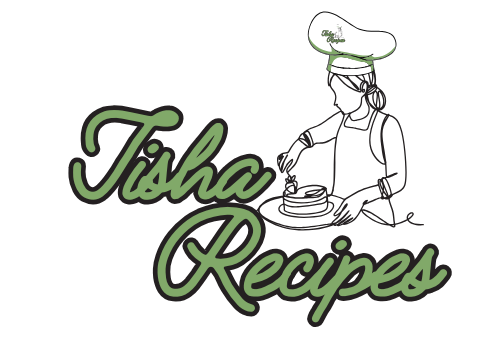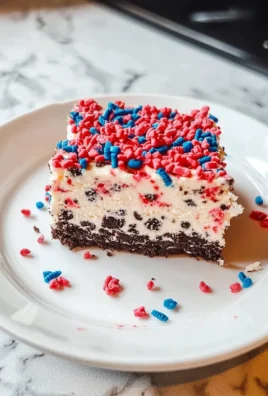
Cinnamon rolls are a timeless favorite, offering the perfect combination of sweet, spiced, and buttery goodness. Whether enjoyed as a warm breakfast treat or a comforting snack, their universal appeal is undeniable. The magic of homemade cinnamon rolls lies in their freshness, aroma, and the love poured into each step of the process. This guide will take you through everything you need to know to craft perfect cinnamon rolls in your kitchen.
Overview of Cinnamon Rolls
Cinnamon rolls are a sweet, spiral-shaped pastry made from a soft, yeast-based dough, generously filled with a mixture of cinnamon and sugar, and often topped with a luscious glaze. Their versatility and customizable nature make them a beloved treat worldwide. From the traditional cream cheese frosting to variations with caramel or maple glaze, these rolls offer endless possibilities for flavor and creativity.
Cinnamon rolls also boast an interesting cultural journey. While their roots can be traced to Northern Europe, where spices like cinnamon became popular, they have since been adopted and adapted in countless cuisines. In Sweden, they are known as kanelbullar and celebrated annually on Cinnamon Roll Day, showcasing their cultural significance.
Brief History and Cultural Significance
Cinnamon rolls originated in Northern Europe during the early spice trade, with cinnamon being a prized ingredient. Sweden is widely regarded as the birthplace of this delightful pastry, where it became a staple in homes and bakeries alike. Over time, variations emerged in other countries, blending local flavors and traditions.
In North America, cinnamon rolls evolved into the sweet and decadent version we know today. Unlike their European counterparts, American cinnamon rolls are often larger, with an emphasis on rich, buttery fillings and indulgent frostings. This evolution highlights the adaptability of this pastry and its ability to reflect the tastes of different cultures.
Globally, cinnamon rolls are celebrated as a symbol of comfort and indulgence, enjoyed on special occasions or as an everyday treat. Their ability to bring people together over a warm, shared experience is a testament to their universal charm.
Preparation Phase & Tools to Use
Prep Time, Cook Time, Cool Time, Total Time, Servings, and Yield
Creating cinnamon rolls involves several key stages: preparing the dough, filling, shaping, and baking. The total process, though time-intensive, is worth every moment. With proper preparation and tools, the experience becomes as enjoyable as the result.
Essential Tools and Equipment
- Mixing Bowls: For combining ingredients and kneading the dough.
- Measuring Cups and Spoons: Ensuring accurate measurements for consistency.
- Rolling Pin: Essential for rolling out the dough evenly.
- Baking Dish or Pan: A 9×13-inch pan is ideal for baking the rolls.
- Stand Mixer (Optional): Great for efficiently kneading the dough.
- Pastry Brush: Used for spreading melted butter over the dough.
- Sharp Knife or Dental Floss: For cutting neat, even rolls without squishing the dough.
Each tool plays a vital role in the process. For instance, a well-floured rolling pin ensures the dough is evenly flattened, while a sharp knife prevents distortion when slicing the rolls. Using the right tools not only simplifies the process but also ensures professional-quality results.
Preparation Tips
- Ensure the Yeast is Active: Use warm (not hot) liquid to activate the yeast. A temperature of 105–110°F is ideal.
- Soften Butter for Better Mixing: Softened butter blends seamlessly into the filling, ensuring even distribution.
- Roll the Dough Precisely: Aim for a consistent rectangular shape to ensure uniform rolls.
- Don’t Skip the Second Rise: Allowing the rolls to rise a second time creates a light and fluffy texture.
- Handle the Dough Gently: Avoid overworking the dough to maintain its softness.
These preparation tips ensure your cinnamon rolls turn out tender, fluffy, and packed with flavor.
Ingredients List (with Measurements)
Dough:
- 1 cup warm milk
- 2 1/4 teaspoons active dry yeast
- 1/4 cup granulated sugar
- 1/3 cup unsalted butter, softened
- 2 large eggs
- 4 cups all-purpose flour
- 1 teaspoon salt
Filling:
- 1/2 cup unsalted butter, softened
- 1 cup brown sugar
- 2 tablespoons ground cinnamon
Glaze:
- 4 ounces cream cheese, softened
- 1/4 cup unsalted butter, softened
- 1 cup powdered sugar
- 1 teaspoon vanilla extract
- 2–3 tablespoons milk
Step-by-Step Instructions
1. Prepare the Dough
In a mixing bowl, combine warm milk, yeast, and sugar. Let it sit for 5–10 minutes until foamy. Add softened butter, eggs, and salt to the mixture, stirring to combine. Gradually add flour, mixing until the dough forms. Knead for about 7–10 minutes until smooth and elastic. Cover the dough and let it rise for 1–2 hours or until doubled in size.
2. Prepare the Filling
Mix softened butter, brown sugar, and cinnamon in a bowl to create the filling. Ensure the mixture is smooth and well-combined for easy spreading.
3. Roll Out the Dough
On a floured surface, roll the dough into a rectangle approximately 16×12 inches. Spread the filling evenly across the surface, leaving a small border around the edges.
4. Shape the Rolls
Starting from the longer side, roll the dough tightly into a log. Pinch the seam to seal. Use a sharp knife or dental floss to cut the log into 12 equal pieces.
5. Second Rise
Place the rolls in a greased baking dish, leaving a small space between each roll. Cover with a towel and let them rise again for about 30 minutes.
6. Bake the Rolls
Preheat your oven to 375°F. Bake the rolls for 20–25 minutes or until golden brown and cooked through.
7. Make the Glaze
In a bowl, beat cream cheese, butter, powdered sugar, vanilla, and milk until smooth and creamy. Adjust the consistency with more milk if needed.
8. Glaze and Serve
Spread the glaze generously over the warm cinnamon rolls before serving. Enjoy the rolls fresh out of the oven for the best flavor and texture.
Enhancing Your Cinnamon Roll Experience
Side Dish Recommendations
While cinnamon rolls are delightful on their own, pairing them with complementary side dishes elevates the overall experience. Whether you’re enjoying them as a standalone treat or as part of a larger spread, these side dish ideas enhance the flavors and textures of your meal.
- Fresh Fruit Salad
A medley of seasonal fruits like strawberries, oranges, and grapes provides a refreshing contrast to the sweetness of cinnamon rolls. The natural acidity and juiciness of the fruit balance the richness of the rolls, making for a lighter, more vibrant pairing. - Scrambled Eggs
The creamy and savory nature of scrambled eggs pairs beautifully with the sweet and spiced profile of cinnamon rolls. Adding herbs like chives or parsley to the eggs enhances their flavor while complementing the rolls. - Crispy Bacon
The salty, smoky crunch of bacon creates a perfect counterpoint to the soft, sweet cinnamon rolls. This classic combination is especially popular for breakfast or brunch gatherings. - Greek Yogurt with Honey
Greek yogurt, drizzled with honey and sprinkled with nuts or granola, adds creaminess and texture to your meal. The tanginess of the yogurt balances the sweetness of the rolls, offering a satisfying contrast. - Maple-Glazed Sausages
Sausages coated in a light maple glaze provide a sweet and savory flavor profile that complements the warm spices of the cinnamon rolls. This pairing is ideal for a hearty breakfast. - Herbal Tea Selection
Pairing cinnamon rolls with herbal teas like chamomile, mint, or spiced chai enhances the experience. The warm, aromatic notes of tea harmonize with the rolls’ cinnamon flavor, creating a cozy combination. - Freshly Brewed Coffee
The bold, slightly bitter taste of coffee cuts through the sweetness of cinnamon rolls, making it a quintessential pairing. Opt for medium or dark roasts for the best flavor balance. - Orange Juice
A glass of freshly squeezed orange juice offers a tangy and citrusy complement to the rich, buttery rolls. The bright acidity cleanses the palate, making each bite of cinnamon roll taste as fresh as the first.
Nutritional Information and Health Benefits
Understanding the nutritional content of cinnamon rolls can help you enjoy them mindfully. While they are an indulgent treat, cinnamon rolls also offer surprising health benefits when made with wholesome ingredients.
1. Balanced Ingredients:
- Whole milk and butter contribute essential fats for energy and satiety.
- Eggs are a source of protein, promoting muscle health.
2. Cinnamon’s Benefits:
Cinnamon, the star ingredient, is rich in antioxidants and has anti-inflammatory properties. It also helps regulate blood sugar levels, which can moderate the sweetness of the rolls.
3. Nutritional Additions:
Adding nuts, seeds, or dried fruits to the filling increases the rolls’ fiber and nutrient content. Whole wheat flour can also replace some all-purpose flour for added fiber and a nutty flavor.
4. Portion Control:
Cinnamon rolls are calorie-dense, so enjoying them as part of a balanced meal can prevent overindulgence. Pairing them with protein-rich sides like yogurt or eggs helps you feel fuller for longer.
Common Mistakes to Avoid and How to Perfect the Recipe
Even seasoned bakers can encounter challenges when making cinnamon rolls. Avoiding these common mistakes ensures your rolls turn out soft, flavorful, and visually appealing.
1. Rushing the Yeast Activation
Using liquid that’s too hot or too cold can hinder yeast activation. Always use lukewarm liquid to ensure the yeast blooms properly.
2. Overworking the Dough
Kneading the dough too much can result in dense rolls. Knead just until the dough is smooth and elastic to maintain a soft texture.
3. Skipping the Second Rise
Allowing the rolls to rise a second time after shaping is crucial for a fluffy texture. Without this step, the rolls may turn out flat or tough.
4. Uneven Rolling and Cutting
When rolling out the dough, ensure an even thickness to prevent some rolls from being underbaked. Use dental floss or a sharp knife to slice cleanly without flattening the rolls.
5. Overbaking the Rolls
Baking cinnamon rolls for too long can dry them out. Keep an eye on them in the oven, and remove them once they’re golden brown and slightly firm to the touch.
6. Skimping on the Filling
Generously spread the cinnamon-sugar mixture over the dough to achieve a rich, flavorful spiral in every bite. Ensure the filling reaches the edges for even coverage.
7. Applying the Glaze at the Wrong Time
Glazing rolls while they’re too hot can cause the glaze to melt and become runny. Wait until the rolls are warm but not hot for the perfect consistency.
8. Not Greasing the Pan Properly
Failing to grease the baking dish can cause the rolls to stick, making them difficult to remove. Use butter or non-stick spray to prevent this issue.
Tips for Perfecting the Recipe:
- Use high-quality ingredients for the best flavor. Fresh cinnamon, real butter, and pure vanilla extract make a noticeable difference.
- Experiment with fillings like nuts, raisins, or a hint of nutmeg for unique variations.
- Store leftover rolls properly to maintain their texture and flavor. Use airtight containers and reheat gently in the oven or microwave.
Tips, Storing, Reheating, FAQs, and Conclusion
Additional Tips for Perfect Cinnamon Rolls
Making cinnamon rolls is both an art and a science. These tips help ensure your rolls turn out soft, fluffy, and irresistibly delicious every time.
- Use Fresh Ingredients: Always use fresh yeast, cinnamon, and butter for the best flavor and texture. Stale or expired ingredients can compromise the rolls’ quality.
- Incorporate Room Temperature Ingredients: Eggs, butter, and milk should be at room temperature to blend evenly and create a smooth dough.
- Don’t Overload the Filling: While it’s tempting to pack in as much filling as possible, too much can seep out during baking and create a soggy bottom.
- Experiment with Flavors: Add extras like orange zest, cardamom, or chopped pecans for unique variations. You can also try flavored glazes like maple or caramel for a twist.
- Test Dough Consistency: Your dough should be soft but not sticky. Add flour gradually during kneading to achieve the right balance.
- Cool Before Frosting: Let the rolls cool slightly before applying the glaze to prevent it from melting too quickly.
Storing and Reheating Cinnamon Rolls
Proper storage and reheating techniques keep your cinnamon rolls fresh and delicious, even days after baking.
Storing Fresh Cinnamon Rolls:
- Place rolls in an airtight container or wrap them tightly with plastic wrap. This prevents them from drying out.
- Store at room temperature for up to 2 days. For longer storage, refrigerate them for up to a week.
Freezing Cinnamon Rolls:
- Freeze unbaked rolls after shaping. Place them in a greased dish, cover tightly, and freeze for up to 3 months. When ready to bake, let them thaw and rise before baking.
- For baked rolls, cool them completely, wrap individually in plastic wrap, and store in a freezer bag.
Reheating Cinnamon Rolls:
- To reheat rolls, preheat your oven to 350°F (175°C). Place rolls in a baking dish, cover with foil, and warm for 10–15 minutes.
- For a quicker option, microwave individual rolls for 15–20 seconds, covering them with a damp paper towel to retain moisture.
FAQs About Homemade Cinnamon Rolls
1. Why didn’t my dough rise properly?
Your yeast may have been inactive or the liquid temperature too hot or too cold. Always test your yeast beforehand and use lukewarm liquids.
2. Can I make cinnamon rolls ahead of time?
Yes! Prepare the rolls and refrigerate them overnight after shaping. Let them come to room temperature and rise slightly before baking.
3. How do I prevent my rolls from being dry?
Avoid adding too much flour during kneading, and ensure the dough isn’t overbaked. Keeping them tightly covered during storage also helps retain moisture.
4. Can I use gluten-free flour for cinnamon rolls?
Yes, but you’ll need a gluten-free flour blend specifically designed for yeast-based recipes. Be prepared for differences in texture and handling.
5. How can I make vegan cinnamon rolls?
Replace milk with almond or oat milk, butter with vegan butter or coconut oil, and eggs with a flax or chia egg substitute.
6. Why do my rolls fall apart when I cut them?
Use a sharp knife or dental floss to slice the dough cleanly without squishing it. Chill the dough slightly for easier cutting.
7. Can I reduce the sugar in the recipe?
You can reduce the sugar in the dough or filling, but note that it may affect the sweetness and texture. Consider substituting with natural sweeteners like honey or maple syrup.
8. What’s the secret to fluffy cinnamon rolls?
Ensure the dough is soft and slightly sticky, allow proper rising time, and don’t overwork the dough.
9. How do I prevent the filling from leaking out?
Leave a small border when spreading the filling and roll the dough tightly. Chilling the dough before slicing can also help.
10. How do I make the glaze thicker?
Add more powdered sugar to thicken the glaze or reduce the liquid slightly. Adjust the consistency to your preference.
Conclusion
Homemade cinnamon rolls are a labor of love that reward you with unparalleled freshness, flavor, and comfort. By following the techniques and tips outlined in this guide, you’ll master the art of baking perfect cinnamon rolls that rival the best bakeries. Their versatility allows you to customize flavors, fillings, and frostings to suit your taste, making them a delightful treat for any occasion.
Whether you’re serving them fresh out of the oven for breakfast, sharing them with loved ones, or enjoying one with your favorite cup of coffee, cinnamon rolls are more than just a pastry—they’re a warm, sweet reminder of the joys of baking from scratch.
Take the time to experiment and make the recipe your own, and don’t hesitate to share your creations with family and friends. Happy baking!




Leave a Comment